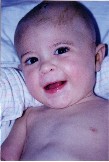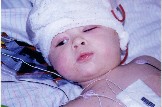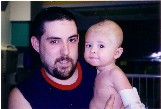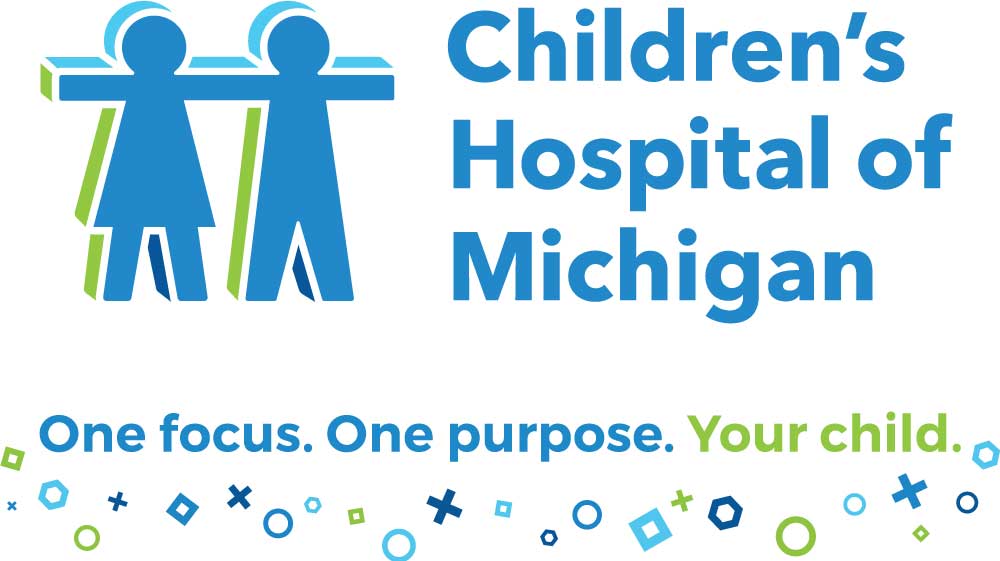Cody's Story
Jun 6, 2019A Medical Miracle: toddler and family get through harrowing surgery with smiles and Beanie Babies
Melissa Fairchild can recall every detail when her eight-month-old son, Cody, began having up to 300 seizures a day back in the fall of 2004.

“We were in the car approaching the parking lot where my husband works when Cody began to scream. So I swerved into a spot, pulled him out of his car seat and positioned him against the steering wheel to see if I could calm him down. That’s when his eyes rolled back, his head fell forward and his arms flew up in the air. I just freaked,” she said.
Eventually, Cody was diagnosed with a malignant form of epilepsy – infantile spasms characterized by seizures called “drop attacks.” On some days he experienced 60 to 70 of them in clusters.
Over the next several months, different medications were tried – and failed -- to control Cody’s seizures. So his neurologist in Toledo referred Cody to the Children's Hospital of Michigan where doctors are known for developing the PET (position emission tomography) approach to locating “seizure focus” in patients who have difficult epilepsies.
After injecting the brain with glucose nuclear dye, PET’s cutting-edge technology reveals “slices” of the organ (in this case brain) and indicates areas of functional abnormality on a screen. Children’s Hospital of Michigan is the first hospital in the world to have a PET center fully dedicated to kids.
Whereas Cody’s MRI scans were negative, his PET scans indicated abnormalities in the posterior of the left hemisphere of the brain.
After collaborating with a team of neurologists and surgeons, it was determined that the abnormal portions of Cody’s brain – about 60 percent of the left side – would have to be removed in order to control his seizures.
Cody caught a break because of his age and because the abnormal areas were confined to the left side sparing the motor cortex. Had both sides of the brain been affected, doctors said not much could have been done to correct the issue.
The neurosurgeon on staff, who performed Cody’s surgery, or multi-lobar resection, was Sandeep Sood, M.D., assistant professor of neurological surgery at Wayne State University.
 “Cody had a two-stage surgery,” said Dr. Sood. “In the first stage, we positioned about 120 platinum electrodes on the surface of the entire left side of his brain. After closing his skull, his brain activity was monitored by Eishi Asano, M.D., Ph.D., assistant professor of Pediatrics and Neurology, in a special room with a camera. So we were able to figure out precisely what parts of his brain were causing his seizures.
“Cody had a two-stage surgery,” said Dr. Sood. “In the first stage, we positioned about 120 platinum electrodes on the surface of the entire left side of his brain. After closing his skull, his brain activity was monitored by Eishi Asano, M.D., Ph.D., assistant professor of Pediatrics and Neurology, in a special room with a camera. So we were able to figure out precisely what parts of his brain were causing his seizures.
“Four days later, during the second stage of Cody’s surgery, we removed most of his frontal lobe, a fair amount of his parietal lobe and almost the complete temporal lobe on the left side during a nine-hour procedure,” said Dr. Sood. Today, Cody appears to be as normal as any other two-year-old. He loves to run and jump and play with his three-year-old brother, Caleb.
“Cody is quite responsive, too,” said his father, Chad. “If I tell him to go to bed, he goes right to bed. And he can say a couple of words, although we have him in speech therapy right now. He attends an early intervention class and is learning sign language, just in case.”
Dr. Sood concurs that Cody is doing amazingly well. “When I first met him he would come into my office and seize for 15 minutes,” said Dr. Sood. “It is most gratifying to see him come in today and be seizure free.”
Meanwhile, Cody’s parents are thankful to everyone at Children’s Hospital of Michigan who helped them and their son get through such a harrowing experience.
“Everyone at Children’s Hospital was fantastic,” said Melissa. “I love them to death. They’re like a second family to us now.
“For example there was this young man, a nurse, who would just stay and chat when one of us was sleeping and the other needed an adult to talk to. And, every time we went into the EEG lab for Cody to have a test done, Carol and the other technicians would always be sure to say ‘hi’ and give Cody a hug. I could go on and on,” she said.
 “And don’t forget the volunteer who came in with hundreds of Beanie Babies glued to his body,” said Melissa. “He was quite the character, and he gave Cody a volunteer-made blanket. We loved that man.”
“And don’t forget the volunteer who came in with hundreds of Beanie Babies glued to his body,” said Melissa. “He was quite the character, and he gave Cody a volunteer-made blanket. We loved that man.”
“Basically, Cody was able to take his first steps in life twice,” said Melissa, “and we owe it all to Children’s Hospital of Michigan.”


